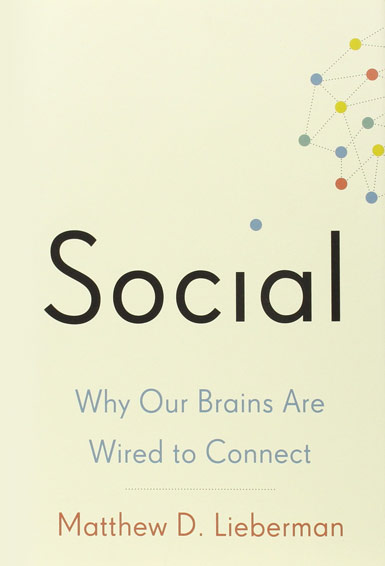
Unlocking Potential: Nurturing Young Minds
Experts estimate more than one million new neural connections are created every second during the first years of life.
Human beings are unique in that 75% of our brain growth takes place outside the womb; and, most importantly, 95% of that growth occurs in the first three to five years of life, making this an especially critical period of our development.
Scientific research continues to provide greater and more detailed understanding of brain development during this early period and of the environmental factors that can most effectively strengthen and promote the healthy development of each child, thus benefitting society as a whole.
During our first years we are capable of learning and developing rapidly; we develop our senses and our motor skills, identify our group, develop our language and social behaviors. By age six, the brain is already 95% of its adult size. But the gray matter, or thinking part of the brain, continues to thicken throughout childhood as the synapses make extra connections in response to input from the world outside.
Experts estimate more than one million new neural connections are created every second during the first years of life.
Infants are wired for learning from the moment they enter the world. But to flourish, young children need experience interacting with the world, particularly the world of people. Positive social interactions are indispensable for healthy development. Parents and caregivers who engage in responsive, supportive interactions help empower very young children to explore, learn, and grow.
Brain Growth from Infancy to Early Childhood
Brain development begins before birth and continues at an extraordinary pace during early childhood. During infancy, the brain experiences explosive growth, forming intricate connections at an astonishing rate: experts estimate more than one million new neural connections are created every second during the first years of life. Sensory and motor areas develop rapidly, laying the groundwork for language acquisition, vision, and motor skills. At the same time, unused synapses are trimmed away, optimizing neural pathways for efficiency.

During toddlerhood, from about two to three years of age, language begins to blossom. The language centers of the brain become more specialized. Children eagerly absorb words, syntax, and communication skills. During this period, executive functions emerge as the prefrontal cortex matures. Executive functions support impulse control, decision-making, and planning. The social brain awakens, as emotional regulation and social cognition take center stage. Toddlers start to learn to navigate their feelings and understand others.
From about three to six years of age, the executive functions continue to develop; planning, attention, and inhibition sharpen, setting the stage for cognitive control. Brain regions related to creativity and symbolic thinking flourish. Children revel in imaginative play, constructing entire worlds in their minds. Axons—the brain’s communication highways—get coated with myelin. This insulation speeds communication between different brain regions.
The Importance of the Social Environment
Jack Shonkoff, M.D., director of the Center on the Developing Child at Harvard University, explains the importance of experience this way: “Genes determine when circuits get built. Experience, individual differences in people’s life experiences determine how those circuits get built. Together, they both explain the development of brain architecture.”
In the book Social: Why Our Brains Are Wired to Connect, Matthew Lieberman points out that we are all neurobiologically wired for social connection. We now know that children are wired for these connections from birth, and attachment to others is key to healthy development. As children interact with others in their environment, their brains form new connections and strengthen existing connections between neurons. Social experiences stimulate brain regions responsible for language, empathy, and understanding others’ emotions and cognition.
In a recent paper, researchers at The Institute for Learning and Brain Sciences at the University of Washington note that that “Being nurtured is part of our nature. The human brain is ‘prepared’ to encounter and learn from others; those social interactions in turn wire and remodel the brain, starting at birth and throughout the lifespan…. Infants are born learning socially. Through observations of others and social interactions, they construct more complex beliefs, desires, intentions, and values.”
Children who experience positive, supportive social interactions with parents and caregivers develop secure attachments, which foster healthy emotional regulation and resilience. As Dr. Shonkoff explains, “The brain is wired to expect interaction with other people. It’s not looking for interaction with tablets, or mobile phones, mainly because those stimulus sources are not interactive. This need for interaction is built into our biology, into our genes.” Shonkoff uses the term “serve and return” to describe the type of positive interactions that young brains need. As in sports like tennis, volleyball and ping pong, the “players” are attentive and responsive to each other, going back-and-forth as each reacts to the other, moment to moment.


This how-to video from the Center on the Developing Child at Harvard University breaks down serve and return into 5 simple steps and features adults and young children doing each step together.
Researchers at the University of Washington have also been studying how social interactions affect child development, and how critical positive interactions are for healthy development. The Institute’s website explains how the “magic of everyday interactions” underpins healthy brain development. As the introduction to a set of short, instructional videos explains, “While it might seem as though play is just fun and games, for children play is one of the most important and meaningful contexts for learning and building relationships.” In his book The Anxious Generation, social psychologist Jonathan Haidt confirms that a play-based childhood in the real world is fundamental and necessary to healthy development.
Social interactions, including social play and serve and return encounters, are also critical for language acquisition. Conversations, storytelling, and reading all enhance language development. Brain regions related to language processing thrive when children engage in social communication. As Lee and colleagues wrote in their recent paper on human learning, “Parents’ social reactions to children’s vocalizations increase the complexity of children’s vocalizations. It’s as though having a social audience motivates young children to display their best and most complex linguistic abilities.”
Responsive Care Can Make a Difference

The World Health Organization (WHO) describes responsive caregiving as “the ability of the caregiver to notice, understand, and respond to the child’s signals in a timely and appropriate manner.” Because responsive caregiving helps to promote early learning, the WHO recommends that all children receive responsive care during the first three years of life and that “support for responsive care and early learning should be included as part of interventions for optimal nutrition of infants and young children.”
Researchers who conducted a systematic review and meta-analysis of over 100 studies of parenting interventions for children during the first 3 years of life concluded that intervention with parents during this period improved cognitive, language, motor, and socioemotional development, and attachment, and reduced behavior problems. The researchers also found that certain types of interventions were more effective than others. They categorized interventions as to whether they included a focus on responsive caregiving (i.e., interventions that sought to improve the quality of parent-child interactions versus those that did not) and found that parenting interventions that did focus on responsive caregiving were more effective than interventions without this component. The researchers also reported that the interventions were more effective in low- or middle-income countries compared to high-income countries. The reasons for these differences were not clear, but the authors suggest that it may be because parents and children in low- and middle-income countries are exposed to more risk factors and have fewer existing learning opportunities and so may benefit more from access to additional resources.
Early Childhood Education Can Make a Difference
Parents are not the only ones who play a critical role in supporting child development. Outside of the home, early childhood education programs (ECE) can provide a safe, stimulating environment for young children.
In 2019, researchers at the Learning Policy Institute published a report titled “Untangling the evidence on preschool effectiveness: Insights for policymakers.” This report reviews and summarizes the extensive and sometimes confusing body of research on the effectiveness of early childhood education programs. Acknowledging that the results are not entirely consistent across studies, the authors conclude that “well-implemented programs support substantial early learning gains and can have lasting impacts throughout school.”
Preschool programs can differ substantially in the details of how they are implemented. The authors identify elements necessary for a quality preschool program, including small class sizes, well-prepared teachers who give sufficient support and feedback, appropriate early learning curricula and assessments, and meaningful family engagement. Importantly, quality early childhood education is especially important for children from low-income households. As the authors write, “Differences in how children develop are substantially linked to differences in children’s learning experiences. As early as 9 months of age, the differential experiences of children growing up in low-income households and children from more affluent homes can lead to a gap in their cognitive development. The developmental gaps continue to grow through elementary and secondary school unless other learning opportunities intervene.”
In a 2023 review of the evidence on early childhood education, scholars Robert A. Hahn and W. Steven Barnett found that “Early Childhood Education can benefit children, especially those most disadvantaged, with additional societal benefits and positive long-run economic returns.” They also note that “Because resource deprivation is concentrated in low-income and minority communities, publicly funded universal ECE can also be a powerful instrument for the promotion of social equity.” While programs that target children from low-income households might on first blush seem to be more efficient in addressing inequities, Hahn and Barnett argue that universal ECE programs are more effective for a number of reasons. For example, parental involvement may be greater in universal programs, and children from lower income households may benefit from interacting with peers from other backgrounds. Targeted programs may stigmatize children from lower income households. Perhaps the most compelling argument for universal early childhood education is that universal programs have been found to be more effective than targeted programs for children from low-income households.
Targeted programs such as Head Start, which focuses particularly on children from low-income families, are designed to enhance the cognitive, social and emotional development of young children. All but six states in the US provide some sort of state-funded preschool (Head Start funding is mostly federal). Some states, though not all, have eligibility criteria which prioritize services for children from low-income households. While a number of states in the US have committed to universal preschool, some have struggled to put these policies into practice. For example, Georgia, Illinois, Maine, and New York have universal policies that have not been fully implemented, although enrollment has increased.
According to the National Institute for Early Education Research (NIEER), during the 2022-2023 school year, over 1.6 million children attended state-funded preschool, an increase of 7% from the 2021-2022 school year, but still a lower total than pre-pandemic. In addition, only five states’ programs meet all ten of NIEER’s quality standard benchmarks. Preschool funding continues to be a problem, and approximately half of all young children living in poverty do not attend preschool. Given the persistent disparities in education and income in the United States, the potential benefits of universal preschool, and the suboptimal reach of the existing programs, continuing efforts to improve the reach and quality of preschool programs are essential.
Additional Reference
1Lee, C. D., Meltzoff, A. N., & Kuhl, P. K. (2020). The braid of human learning and development: Neuro-physiological processes and participation in cultural practices. In Handbook of the cultural foundations of learning (pp. 24-43). Routledge.
Jeong, J., Franchett, E. E., Ramos de Oliveira, C. V., Rehmani, K., & Yousafzai, A. K. (2021). Parenting interventions to promote early child development in the first three years of life: A global systematic review and meta-analysis. PLoS medicine, 18(5), e1003602.

Social: Why Our Brains are Wired to Connect
Explore the groundbreaking research in social neuroscience revealing that our need to connect with other people is even more fundamental, more basic, than our need for food or shelter. Because of this, our brain uses its spare time to learn about the social world – other people and our relation to them.

Improbable Scholars
How do we determine if our schools are preparing students for a meaningful future in our society and improve the schools that are not living up to those standards? Explores the current crisis in American education and four districts that have made positive changes.

One World School House
There may be a young girl in an African village with the potential to find a cancer cure. A fisherman’s son in New Guinea might have incredible insight into the health of the oceans. By combining technology with the best teaching practices, we can foster students who are capable of creative approaches to real-world problems.

Beyond the Hole in the Wall
Sugata Mitra’s now famous experiments have shone light on the immense capacities that children have for learning in self-composed and self-regulated groups.
In the series: Education Yesterday and Today
Related articles:
Further Reading »
External Stories and Videos

The State of Preschool 2017
The National Institute for Early Education Research
The latest state-by-state report card on progress in early childhood education.

Thinking Children Become Thinking Adults
Hoopoe Books
Uncover the world of oral and written storytelling from a time before formal schools, when stories were the way in which everyone learned universal lessons of empathy and tolerance.

